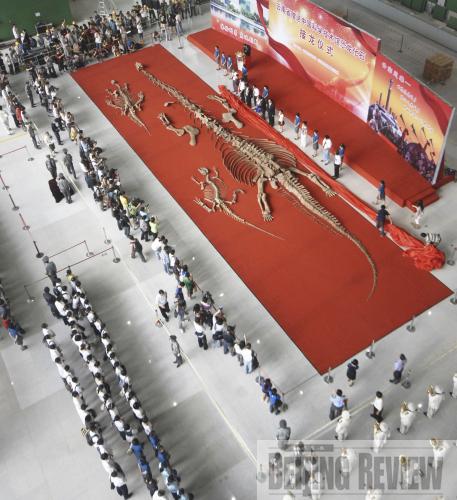|
|
 |
|
(WEI YAO) |
The flag of the old China Science and Technology Museum in Beijing was taken down for the last time on July 28 from the position where it fluttered for 21 years. But lovers of ideas and discovery need not fear—the flag's removal was not an end, it was a new beginning. A brand new home for the museum was opened to the public on September 16 after more than three years of construction.
The closing of the old museum was the end of an era—it was China's first national institution that spotlighted the country's science and technology achievements. Its first phase project was completed and opened to the public in 1988 and the second phase project was completed in April 2000. During the past 21 years, the museum has entertained more than 20 million tourists. The old location's public facilities will continue to be used to provide scientific services to the public.
"Our audiences have deep feelings for the museum," said Xu Yanhao, curator of the museum.
The museum's new location is inside the Beijing Olympic Park, where it neighbors the Bird's Nest stadium and the Water Cube aquatics center. The building encompasses 102,000 square meters, a sizable upgrade from the old museum's 65,000 square meters. The new museum is the biggest one of its kind in the world, experts said, and can accommodate up to 40,000 visitors at one time. Developers also created tens of thousands of square meters of free public areas inside and outside the institution. Visitors can enter the Olympic Forest Park freely through the museum public areas.
The new building forms a large jigsaw module. Its facade is made of a series of white wave-patterned metal plates while the sides are formed with green reflective glass and stainless steel. As the angle of the sun changes throughout the day and season, the building's staggered construction will form different three-dimensional pictures cast by ever-changing shadows from the wave-patterned plates.
 |
|
BIG HISTORY: Three dinosaur fossils settle in the new China Science and Technology Museum on August 18 (WEI YAO) | The new museum's cubic jigsaw puzzle pattern is fashioned after a Lu Ban lock. Lu Ban was a great carpenter, engineer and inventor during the Spring and Autumn Period (770-476 BC) who created the intricate puzzle. It is a design that merges traditional Chinese culture with modern technologies, imparting in the new museum a theme of exploration and unlocking secrets.
The new museum houses a new ventilation system that combines standard air-conditioning with natural ventilation, allowing the indoor air to self-adjust to the change of seasons. In spring and autumn, the museum can alter its indoor air and temperature by using inputs from the natural ventilation system. The rainwater collection system, meanwhile, can collect precipitation falling on the 40,000-square-meter roof to water the surrounding grounds. The museum is powered with solar and wind energy systems located onsite.
Leisure exhibition
The museum will make its exhibitions more interesting, said Xu. It will adopt story lines for the design of its exhibitions. In the exhibition entitled The History of Communications, for example, different kinds of products spanning the development of communications, from beacon towers to cell phones, will be displayed.
| 